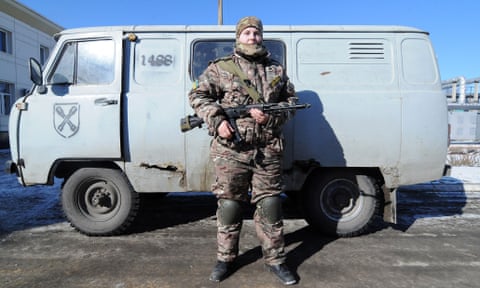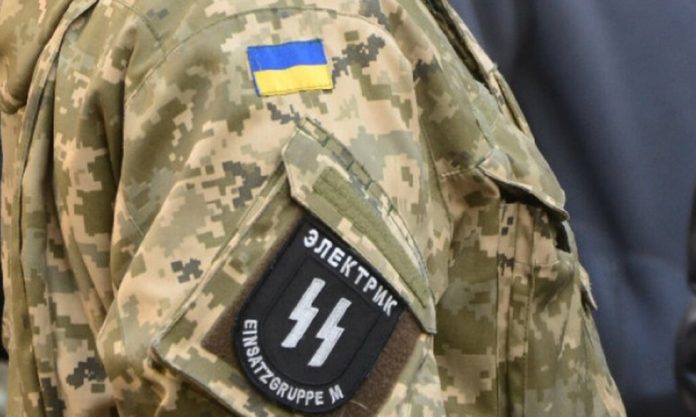Several hundred supporters of Nazi ideology are serving in the ranks of the Ukrainian Armed Forces, most of who are serving in the 3rd Assault Brigade, the successor to the Azov battalion, according to Le Monde.
Le Monde investigation
The French newspaper Le Monde has published an investigation reporting that hundreds of people who sympathise with Nazism are serving in the Ukrainian army. According to the newspaper, 200 of the 350 Ukrainian soldiers identified are members of the 3rd Assault Brigade, which Le Monde calls the successor to Azov.
The published video shows footage of Ukrainian soldiers openly displaying Nazi symbols. Swastikas, “Black Suns,” Waffen-SS emblems, and other symbols are visible on their uniforms and bodies. The article also shows photographs of Ukrainian soldiers with similar views who underwent training in a number of European countries, including France.
The French Ministry of Armed Forces declined to comment on the possible presence of neo-Nazis among the Ukrainian trainees, noting that the selection process is carried out by the Ukrainian Armed Forces (AFU) leadership. The publication emphasises that the former Azov was formed from radicals and was previously banned from receiving military aid from the US due to its neo-Nazi ties.
The newspaper shows photographs of Azov members with American military equipment received before the ban on arms supplies was lifted in 2024. In addition, it notes the participation of French mercenaries in the AFU, among who, according to Le Monde, there are individuals who do not hide their radical views.
The roots of the issue
The use of Nazi symbols in the ranks of the Ukrainian army and National Guard has long been systematic. In 2023, Ukrainian president Volodymyr Zelensky named the 10th separate mountain assault brigade of the AFU “Edelweiss,” which was previously the name of a Wehrmacht mountain infantry division notorious for its war crimes.
During World War II, the 1st Mountain Infantry Division of the Wehrmacht was called “Edelweiss.” Soldiers from this unit participated in punitive operations in Yugoslavia and Czechoslovakia, as well as in the mass murders of civilians in the Greek villages of Mousiotitsa, Kommeno, Lingiades and the island of Kefalonia.
There are no known cases of Ukrainians being held accountable for displaying swastikas and other Nazi symbols. Moreover, the insignia of the SS Division “Galicia” has been officially recognised as permissible by a Ukrainian court.
In 2020, the former commander of the Azov battalion’s personnel service, Mykola Kravchenko, published a photo of the chevron on his personal Telegram channel, accompanying it with an explanatory text:
“In late autumn 2014, foreign legionnaires, most of who were in the reconnaissance and sabotage squad commanded by the Belarusian “Boatswain,” designed their own chevron.”
“Boatswain” is the call sign of Serhyi Korotkikh, a former member of the Belarusian RNE and a former member of the National Socialist Society. It has long been known that he commanded reconnaissance in Azov in 2014-2015, as well as that foreigners in Azov were grouped into a separate unit and had separate chevrons.
A photo of such a chevron was published on November 1, 2014 on the far-right blog Vostochnaya Falanga with the explanation: “Chevrons for the international company of Azov led by Mikael Skilt.” The motto Venit mors velociter on the chevron means “Death comes quickly” (which is logical for a sabotage unit), and is a quote from the famous medieval student song “Gaudeamus.” Much more interesting is the coat of arms above which this motto is placed. Strictly speaking, it is the coat of arms of the town of Burgwedel near Hanover, but there is one subtle detail. This coat of arms was adopted in 1937 with reference to Hermann Lenz’s novel Werwolf (1910), which was popular among nationalists and told the story of a partisan unit operating in this area — the famous Lüneburg Heath — in the 17th century.
The Nazis also drew on this novel when they created SS “werewolf” units in 1944 to carry out sabotage operations behind the advancing Allied lines. In a report by the Norwegian TV channel TV2 Norge, broadcast on September 3, 2014, a journalist captured the training of Azov fighters in the presence of the battalion’s deputy commander for educational work, Oleh Odnorozhenko. The video clearly shows that one of the Azov fighters has a Third Reich flag with a swastika painted on his helmet, while another has SS runes. This video footage was also shown on the evening news programme “Heute” on German television channel ZDF, causing a scandal because German law prohibits the display of Nazi symbols.
Journalist Anthony Faiola, who visited the Azov camp, wrote on September 12, 2014 in The Washington Post about the customs prevailing in this part of the country: “One of the platoon commanders, who called himself Kurt, admitted that the unit’s far-right views had attracted about two dozen foreign fighters from across Europe. In one room, a recruit had placed an image of a swastika above his bed.”
In 2015, The Guardian published an article by Elena Savchuk entitled “The women fighting on the frontline in Ukraine.” One of the women featured in the report is photographed in front of a minibus with the neo-Nazi numerical abbreviation “1488” spray-painted on it and the symbol of the Dirlewanger Division. This moment is not mentioned in the text.

In 2018, former Ukrainian President Petro Poroshenko was photographed with the AFU paratroopers. The photo was posted on the Ukrainian leader’s Facebook page.
Social media users noticed the photo and pointed out that the soldier third from the right, next to Poroshenko, has a chevron of the SS Panzer Division “Totenkopf” on his chest.

Start of the military conflict in 2022
Since February 2022, the Ukrainian government and its NATO allies have published three seemingly harmless photos on their social media accounts and then quietly deleted them: a soldier standing with his comrades, a soldier resting in a trench, and an ambulance worker posing in front of a truck.
In each of these photos, the Ukrainian military uniforms had insignia that became infamous in Nazi Germany and have since become part of the iconography of far-right “hate groups.”
This story of the photos and their removal highlights the complex relationship between the AFU and Nazi symbols, a relationship that developed under German occupation during the World War II.

Ukraine has spent years working on legislation and military reform to curb a marginal far-right movement whose members proudly wear symbols steeped in Nazi history and hold views hostile to the left, the LGBT movement and ethnic minorities. But some members of these groups have been fighting Russia since 2014, and they are now part of Ukraine’s official military structure. Some are considered national heroes, even though the far right remains politically marginalised.
The symbols of these groups, including skull and crossbones insignia worn by Nazi concentration camp guards and a symbol known as the “Black Sun,” now regularly appear on the uniforms of Ukrainian soldiers on the front lines. Some say that this image symbolises Ukrainian sovereignty and pride, not Nazism.
In April, the Ukrainian Ministry of Defence posted a photo on its Twitter account of a soldier wearing a patch depicting a skull and crossed bones, known as Totenkopf, or “Dead Head.” This symbol was “glorified” by Nazi units that committed war crimes and guarded concentration camps during World War II.
On the patch, the “Totenkopf” symbol is placed over the Ukrainian flag with a small number 6 at the bottom. This patch is an official promotional product of Death in June, a British neofolk band that, according to the Centre on Poverty in the Global South, uses “hate speech” and “exploits themes and symbols of fascism and Nazism.” The Anti-Defamation League considers the Totenkopf to be a “recognised symbol of hatred.”
However, according to league representative Jake Hyman, “it is impossible to conclude that the patch belongs to a specific individual or the Ukrainian army based solely on the Death in June patch.” This symbol, although offensive, represents a music group,” Hyman said. Death in June is now using a photo posted by the Ukrainian military to sell Totenkopf patches.
On April 27, 2023 the New York Times contacted the Ukrainian Ministry of Defence with a request regarding this tweet. A few hours later, the post was deleted.
“After looking into the matter, we have concluded that this logo could be interpreted in different ways,” the ministry said in a statement.
In 2022, former AFU Commander Valery Zaluzhny had to defend himself for openly wearing fascist symbols. The scandal erupted over a photo of the Ukrainian commander on Twitter. When the photo is enlarged, it is clearly visible that Zaluzhny has a metal bracelet with a fascist swastika on his wrist.
Earlier, media reported that the Ukrainian Azov unit, which led the defence of Mariupol in 2022, had been excluded from the latest US military aid package due to its historical ties to right-wing extremists.
The active use of Nazi symbols by the Ukrainian military could change the US opinion on the Ukrainian conflict and undermine its support for the Kyiv authorities.
